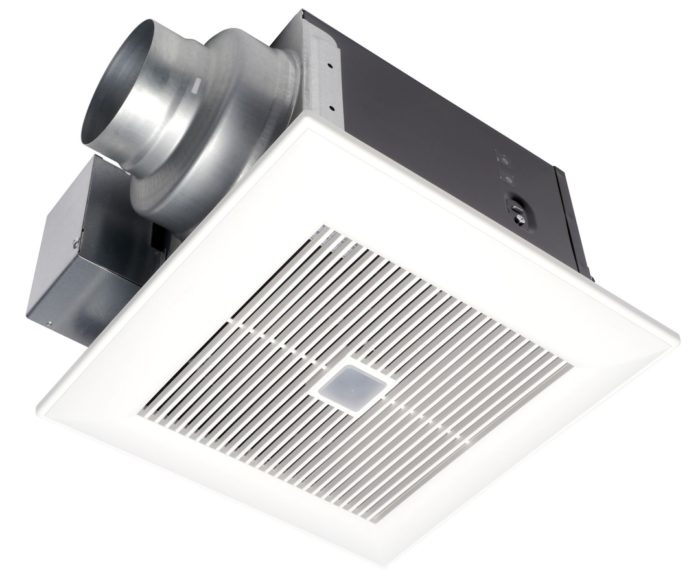
Image Credit: Panasonic
You know every little bit helps. Whether you are helping a customer select a higher quality bath exhaust fan or you are making more money on the fans you sell, it all adds up, benefiting you and your customer. So don’t ignore the following opportunity to affect positive change with a small but important product — and make a couple of extra dollars along the way.
There are three important words when it comes to upgrading bathroom exhaust fans: “Energy Star” and “location.” Now when I start talking about Energy Star and bath fans in the same sentence, most of our clients have reached E-Star fatigue, so they usually roll their eyes and ask, “Just how much energy does a ventilation fan use in the first place?” I smile, because I know they are about to love me!
Energy Star fans are quiet
Yes, one of the reasons we recommend Energy Star exhaust fans is because they use less energy. But by the far and away the main reason we recommend them is because they make less noise — and that’s a green upgrade every client is willing to pay more for.
A fan that doesn’t rattle? A fan you can barely hear? And it uses less energy at the same time? Nothing in the home is easier to get a client to upgrade than these exhaust fans.
HOW TO SELL GREEN UPGRADESPart One: Radiant Barrier PaintsPart Two: Tankless Water HeatersPart Three: Energy AuditsPart Five: Electrical ImprovementsPart Six: Better InsulationPart Seven: A Few Small Things
Laundry rooms can be smelly
But don’t forget about location, our third important word I mentioned earlier. Do you put one in the laundry room? Have you considered offering your client the upgrade option to do so? You know there is likely no room in the house that needs proper ventilation more than laundry. Think about what’s in your laundry: dirty, musty — perhaps wet and muddy — clothes, cleaning supplies, pet food, a litter box with what on top? Likely several items that belong in the garage but have not quite made it the there: paints, thinners, charcoal lighter …?
A dual-speed Energy Star exhaust fan with constant low volume exhaust will keep the laundry under negative pressure and make it less likely that polluted air will concentrate or migrate in to the rest of the home. This is an easy to understand the upgrade for your client, and an easy profit-maker for you.
So whether the magic words are “Energy Star” or “location,” incorporating them into your lexicon will make your clients happier and you more money.
Weekly Newsletter
Get building science and energy efficiency advice, plus special offers, in your inbox.















2 Comments
Selling upgrades
Very timely article. I am just building my first LEED rated home here in Houston (spec house) and used the expensive Panasonic fans in the bath and utility. I fortunately have sold the house and was walking the buyer through yesterday and explaining the various features. I pointed out these fans and explained how builders typically use a cheap $39 fan that would rattle and maybe last 4-5 years, and of course how inefficient they are.
The big question is do buyers really appreciate these features. I’m not sure my buyers do.
Do they care?
Yeah Allan, with a spec home it is completely different than with a custom. As you know with a spec, your time to "sell" during a walk though with a prospect is very short. In fact i would be interested in knowing how much time they spent looking at the home. Chances are they were so positively overwhelmed with many other features that they did not have much time to focus on those fans.
But with a custom home you are designing and building for the client, they get to (have to) make many of the decisions that already have been made with a spec home. And fortunately they have much more time to do so. That means you will get to budget time to have a separate discussion about the "V"in hvac and you will be able to sell the value of Energy Star rated vent fans. And remember with these fans it's more about the nose they do not make rather then the energy they save.
Log in or create an account to post a comment.
Sign up Log in